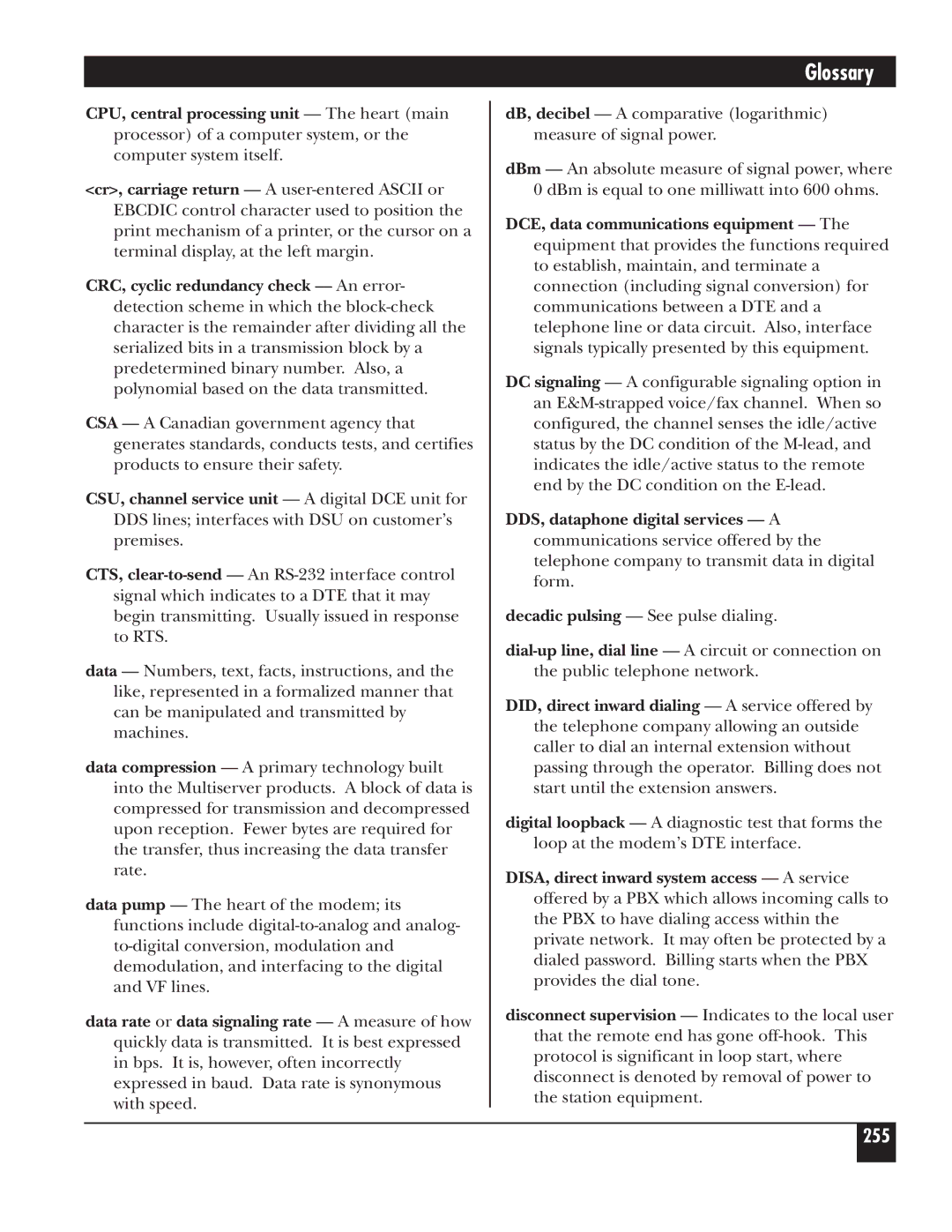
CPU, central processing unit — The heart (main processor) of a computer system, or the computer system itself.
<cr>, carriage return — A
CRC, cyclic redundancy check — An error- detection scheme in which the
CSA — A Canadian government agency that generates standards, conducts tests, and certifies products to ensure their safety.
CSU, channel service unit — A digital DCE unit for DDS lines; interfaces with DSU on customer’s premises.
CTS,
data — Numbers, text, facts, instructions, and the like, represented in a formalized manner that can be manipulated and transmitted by machines.
data compression — A primary technology built into the Multiserver products. A block of data is compressed for transmission and decompressed upon reception. Fewer bytes are required for the transfer, thus increasing the data transfer rate.
data pump — The heart of the modem; its functions include
data rate or data signaling rate — A measure of how quickly data is transmitted. It is best expressed in bps. It is, however, often incorrectly expressed in baud. Data rate is synonymous with speed.
Glossary
dB, decibel — A comparative (logarithmic) measure of signal power.
dBm — An absolute measure of signal power, where 0 dBm is equal to one milliwatt into 600 ohms.
DCE, data communications equipment — The equipment that provides the functions required to establish, maintain, and terminate a connection (including signal conversion) for communications between a DTE and a telephone line or data circuit. Also, interface signals typically presented by this equipment.
DC signaling — A configurable signaling option in an
DDS, dataphone digital services — A communications service offered by the telephone company to transmit data in digital form.
decadic pulsing — See pulse dialing.
DID, direct inward dialing — A service offered by the telephone company allowing an outside caller to dial an internal extension without passing through the operator. Billing does not start until the extension answers.
digital loopback — A diagnostic test that forms the loop at the modem’s DTE interface.
DISA, direct inward system access — A service offered by a PBX which allows incoming calls to the PBX to have dialing access within the private network. It may often be protected by a dialed password. Billing starts when the PBX provides the dial tone.
disconnect supervision — Indicates to the local user that the remote end has gone
